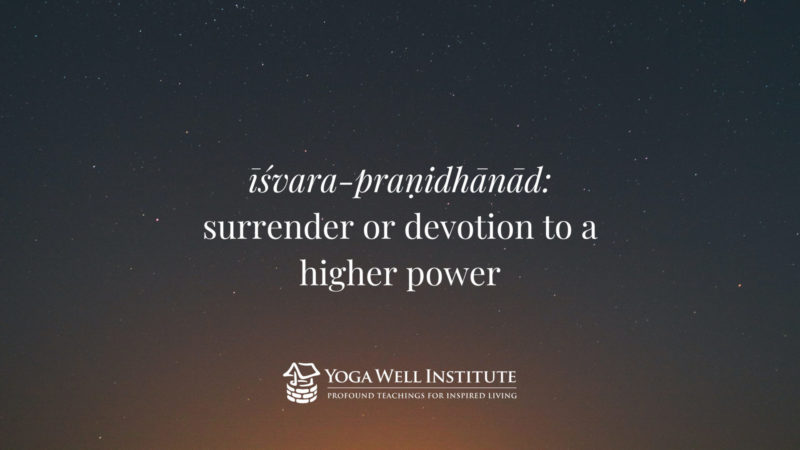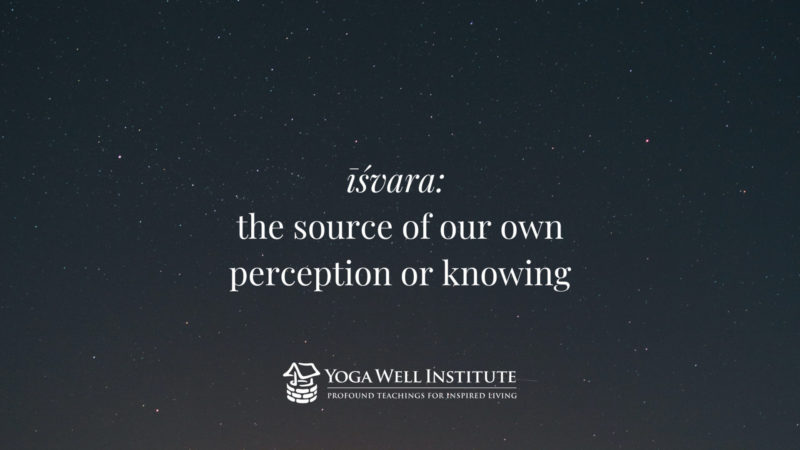Mantra is commonly thought of as a special word or phrase repeated during, or as a support in, meditation.
However, it is important to know that simply repeating the mantra, and hoping for profound change is insufficient. For a powerful impact, we need to visualize the meaning or call up the feeling indicated by that special word or phrase each time we repeat it.
This approach to mantra is a fundamental tool in the practice of Yoga.
To understand why this is, we first have to look at the definition of Yoga as outlined by Patañjali in the classic yoga text the Yogasūtra.
In the first chapter, Patañjali provides an overview of the process of Yoga, what it is and how it works. He begins by emphasizing a mental characteristic of Yoga, the ability to intentionally direct the mind.
Being able to point the mind in a direction of your choosing, he says, can lead to greater clarity and a profound sense of peace. In addition, when you have a focused mind, your actions are more likely to come from a place of authenticity.
One example Patañjali gives is in sūtra I.23: īśvara-praṇidhānād, which means surrender or devotion to a higher power.

Patañjali chooses a generic word for divinity, īśvara, and then describes īśvara as a special being that has never experienced an error, neither in perception nor in action.
He continues, saying that īśvara is the source of our own perception or knowing, as well as that of every other person. In essence, there is within each of us something that has a special quality of truth.
This is īśvara.

We can say that īśvara-praṇidhāna is honoring or following that special voice of knowing that resides inside each of us.
So how do we honor this special voice?
First, we have to connect with īśvara. One way of doing this — and it’s not the only way — is through the use of special words that express or signify īśvara.
This is a mantra.
The effects of mantra
In sūtra I.28, Patañjali emphasizes that mantra is not just the repeating of the words but also calling to mind the meaning and feeling of those words as we repeat them.
This approach has multiple effects on our system.
First, when we ask the mind to be attentive to the meaning of the words as we repeat them, we are intentionally directing the mind.
A directable mind is a sign of a state of yoga. But intentionally directing our mind is also a way to help us get into a state of yoga. This is like a positive feedback loop.
Second, by remembering the meaning of the words each time we say them, we are calling forth specific ideas and emotions which are then strengthened within us. As the mind is directed, the content is also given.
In addition, when we say a mantra out loud — which happens during exhalation — there will be a lengthening of our exhale. With practice, we will be able to repeat a mantra multiple times during a single breath.
Over time, our exhale will become long and smooth (dīrgha-sūkṣma), which is another characteristic of the state of yoga.
As before, a long and smooth breath is a sign of Yoga, but making our breath long and smooth is also a way to nudge ourselves toward a state of Yoga.
How do you choose a mantra?
One thing to note about mantra is that it should not be chosen at random.
A mantra should be chosen for us by a qualified teacher who knows us well. They will pick a mantra that has some utility for us.
While we may notice an effect after repeating a mantra a few times, this is intended as a daily, long-term practice, rather than doing the occasional long session.
Conclusion:

We have seen that īśvara–praṇidhāna is a way of surrendering to a higher power.
But it could also be seen as aligning with, or coming into awareness, of that voice inside of us, the voice that has a special quality of truth to it.
The more we practice mantra, the closer we approach this inner voice. The inner consciousness is revealed to us.
Surrendering to īśvara means listening to this inner voice and making our choices based on what we hear. This is where the idea of authentic actions comes from.
These changes in our system and life are not instantaneous. They happen over time, with repeated practice.
When we become more aligned with our inner voice, we will start to dance with it, which is a kind of intimate, physical interaction.
As we dance more and more with the knowing that is inside, we will truly be able to surrender to īśvara.



